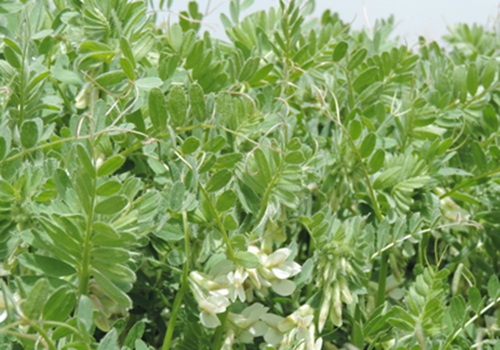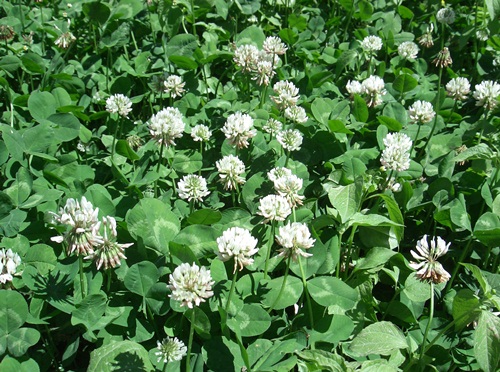1. Alfaalfa Adaptation Trial
2. Alfalfa Yield Trial
3. Development of Synthetic Alfalfa From Eastern Anatolia Ecotype
4. Monitoring Determination of Appropriate Management And Feeding Systems for İntensive Dairy Farming in Eastern Anatolia
5.Monitoring, Classification and Development of Appropriate Rehabilitation Models for Ankara and Erzurum Rangelands
6. Some White Clover Type Adaptation Under Erzurum Ecological Conditions)
7. White Clover Breeding Study Under Erzurum Ecological Conditions
8. Red Clover Breeding Study Under Erzurum Ecological Conditions
9. Orchardgrass Breeding Natural Growing in Erzurum
10. Sainfoin Lines Adaptation to Erzurum Ecological Conditions
11. Some Sainfoin (Onobrychis Sativa) Comparison Of Yield And Yield Components İn Terms Of Line
12. Sainfoin (Onobrychis Sativa) İmprovement Studies
13. National Rangeland Use And Management Project
14. Determination Of Yield And Soil Properties On Native Meadows İn Çat District Of Erzurum.
15. Some Quality And Quantity Parameters Of Chemical Use İn The Baled Alfalfa Grass Investigation Of
16. Effect Of Different Moisture Conditions
17. Determination Of Erzurum Lines Developed Sainfoin Forage Yield Of Ecological Conditions
18. The Fresh /Dry Hay Yields and Dry Hay Yield Distributions By Cuttings of The Lines Selected From Eastern Alfalfa in Comparison With cv. Kayseri and Bilensoy-80
19. Conditions suitable for the Eastern Anatolia and Identification of Artificial Rangeland Forage Crops mixture Project)
20. Crop Production Systems and Production Limiting Factors in Erzurum
21.Research Project of Possibility Yielding İncrease in Erzurum Province Meadows
22. Performance Mixture of White Clover with Gramina Forage Crops under Erzurum İrrigated Conditions
23. Determination Appropriate Mixture Variety used on Artificial Rangeland in East Anatolia Region Conditions and Artificial Grassland Mixture Trial

Its endurance to winter and drought is very good, resistance to grain pull out is fair, property of being blended is good, beginning period of its blooming is early, flower colour is white, its capsule width and length is medium, seed type is spherical, and seed size is moderate, its green herbage yield is 3500 kg/da, dry herbage yield is 750 kg/da, and average seed productivity is 170 kg/da at conditions in Eastern Anatolian Region.
Technological Properties :
- Crude Protein Ratio: 16,4-18,9 %
- Crude Cellulose Ratio: 24,5-28,8 %
- Crude Lipid: 2,2-2,5 %
- Weight at 1000 grain: 37,2 g
Conditions of Diseases and Pest: Resistance is good
Recommended Regions : Eastern Anatolian or similar regions
- DOĞUBEYAZI HUNGARIAN VETCH :
Its endurance to winter and drought is very good, resistance to grain pull out is fair, property of being blended is good, beginning period of its blooming is early, flower colour is white, its capsule width and length is medium, seed type is spherical, and seed size is moderate. Its green herbage yield is 3500 kg/da, dry herbage yield is 750 kg/da, and average seed productivity is 170 kg/da at conditions in Eastern Anatolian Region.
Technological Properties :
- Crude Protein Ratio: 15,8-18,5 %
- Crude Cellulose Ratio: 24-30 %
- Crude Lipid: 2,3-2,5 %
- Weight at 1000 grain: 37,5 g
Conditions of Diseases and Pest: Resistance is good
Recommended Regions : Eastern Anatolian or similar regions
Its endurance to cold weather condition and drought is good, its growth after cut out is good, it can be cut out 2 times at conditions in Eastern Anatolian Region, its plant length is 95 cm and is with vertical habitus, its stem and leaf is pilous, it can be mowed after 4 years of its establishment, its dry herbage yield at conditions in Eastern Anatolian Region is 700 kg/da of which its 60 % is on first cut out and the rest is on second cut out.
Technological Properties :
- Crude Protein Ratio: 17 %
- Crude Cellulose Ratio: 28,7 %
- Crude Lipid: 1,83 %
- Crude Ash: 6,58 %
Elementary Substance with no Nitrogen: 45,4 %
Recommended Regions : Eastern Anatolian or similar regions
It is resistant to cold and drought, requires very short dormant time or is completely non-dormant, growths faster after snow melting as well as after cut out on account of high regeneration capability, can be cut out three times in a year or even more at climates warmer than Erzurum, its dry herbage yield at conditions in Eastern Anatolian Region is 1879 kg/da.
Technological Properties :
- Crude Protein Ratio: 18 %
- Crude Cellulose Ratio: 30 %
- Crude Lipid: 1,80 %
- Crude Ash: 8,8 %
- Elementary Substance with no Nitrogen: 83,2 %
- ADF: 40,3 %
- NDF: 44,2 %
Recommended regions: Eastern Anatolian or similar regions
Its stem is thin and full, and outputs plentiful leaves, its main stem ramificates in significant amount, its pinnule is longer, thinner, and smaller, plant length is between 90 cm and 95 cm, growths much better in cooler conditions, products much more biomass within short vegetation times, its dry herbage yield at conditions in Eastern Anatolian Region is approximately 1565 kg/da of which its 85-90 % is on first two cut out.
Technological Properties :
- Crude Protein Ratio: 19 %
- Crude Cellulose Ratio: 26,5 %
- Crude Lipid: 1,98 %
- Crude Ash: 9,5 %
Elementary Substance with no Nitrogen: 36,3 %
Recommended regions : Eastern Anatolian or similar regions
It has abundant leaves and branches, its stem length and width is on average, plant length is about 85 cm, stem and leaves have fewer feathers, blooming colour is pink, it is earliness, robust to cold conditions, growths better after cut out, can be cut out 2-3 times per year at conditions in Eastern Anatolian Region, its green herbage yield is nearly 8200 kg/da, dry herbage yield is 1600 kg/da, and seed productivity is 40 kg/da on average.
Technological Properties :
- Crude Protein Ratio: 15,4 %
- Crude Cellulose Ratio: 22 %
- Crude Lipid: 2,3 %
- Crude Ash: 9,7 %
- Organic Substance Ratio: 81,7 %
Conditions of Diseases and Pest: Resistance is good
Recommended Regions : Eastern Anatolian or similar region

It has abundant and dense leaves, it is earliness, plant length is about 23 cm, blooming colour is white, resistive to cold conditions, growths better after cut out, can be cut out 2-3 times per year at conditions in Eastern Anatolian Region, resistance to grazing, its green herbage yield is approximately 4900 kg/da, dry herbage yield is about 890 kg/da, and seed productivity is not lower than 17 kg/da.
Technological Properties :
- Crude Protein Ratio: 18,7 %
- Crude Cellulose Ratio: 15,3 %
- Crude Lipid: 1,8 %
- Crude Ash: 13,3 %
- Organic Substance Ratio: 77,4 %
Conditions of Diseases and Pest: Has better resistance to scolerotia and nematodes
Recommended Regions : Eastern Anatolian or similar regions

It has abundant leaves and shows extensive growing, it is an earliness type, plant length is about 24 cm, blooming colour is white, resistant to cold conditions, growths relatively better after cut out, can be cut out 2-3 times per year at conditions in Eastern Anatolian Region, its green herbage yield is nearly 5200 kg/da, dry herbage yield is about 925 kg/da, and seed productivity is 18 kg/da on average.
Technological Properties :
- Crude Protein Ratio: 18%
- Crude Cellulose Ratio: 15,8 %
- Crude Lipid: 1,8 %
- Crude Ash: 11,8 %
- Organic Substance Ratio: 78,6 %
Conditions of Diseases and Pest: Has better resistance to scolerotia and nematodes
Recommended Regions : Eastern Anatolian or similar regions

It has abundant leaves and branches, its stem length is medium and stem width is comparatively thin, plant length is about 75 cm, stem and leaves have fewer feathers, blooming colour is pink, it is an earliness spice, its resistance to cold conditions is quite well, growths significant after cut out, can be cut out 2-3 times throughout one year at conditions in Eastern Anatolian Region, its green herbage yield is nearly 8000 kg/da, dry herbage yield is 1610 kg/da, and seed productivity is 35 kg/da on average.
Technological Properties :
- Crude Protein Ratio: 15,7%
- Crude Cellulose Ratio: 21 %
- Crude Lipid: 2,1 %
- Crude Ash: 9,2 %
- Organic Substance Ratio: 78,6 %
Conditions of Diseases and Pest: Has better resistance to scolerotia, fusarium and nematodes
Recommended regions: Eastern Anatolian or similar regions
It has abundant leaves and branches, its stem length and stem thin, plant length is about 99,5 cm, it is an earliness variety, its resistance to cold conditions is quite well, growths significant after cut out, can be cut out 1-2-3 times throughout one year at conditions in Eastern Anatolian Region, its green herbage yield is nearly 2424,6 kg/da, dry herbage yield is 754,7 kg/da.
Technological Properties :
- Crude Protein Ratio: 15,69%
- Crude Cellulose Ratio: 28,61 %
- Crude Lipid Ratio: 2,31 %
- Dry Matter Ratio: 92,91%
- ADF (Acid Detergent Fiber) Ratio: 33,75%
- NDF (Neutral Detergent Fiber) Ratio: 61,61%
- NYD (Relative Feed Value): 94,5%
Conditions of Diseases and Pest: Has better resistance to diseases and pest
Recommended Regions : Eastern Anatolian or similar regions
It has abundant leaves and branches, its stem length and stem thin, plant length is about 98,8 cm, it is an earliness variety, its resistance to cold conditions is quite well, growths significant after cut out, can be cut out 1-2-3 times throughout one year at conditions in Eastern Anatolian Region, its green herbage yield is nearly 2423,0 kg/da, dry herbage yield is 760,8 kg/da.
Technological Properties :
- Crude Protein Ratio: 10,22%
- Crude Cellulose Ratio: 23,38 %
- Crude Lipid Ratio: 1,92 %
- Dry Matter Ratio: 93,27%
- ADF (Acid Detergent Fiber) Ratio: 23,74%
- NDF (Neutral Detergent Fiber) Ratio: 64,01%
- NYD (Relative Feed Value): 102,3%
Conditions of Diseases and Pest: Has better resistance to diseases and pest
Recommended regions: Eastern Anatolian or similar regions
- DOĞU YILDIZI ORCHARDGRASS :
It has abundant leaves and branches, its stem length and stem thin, plant length is about 96,7 cm, it is an earliness variety, its resistance to cold conditions is quite well, growths significant after cut out, can be cut out 1-2-3 times throughout one year at conditions in Eastern Anatolian Region, its green herbage yield is nearly 2449,0 kg/da, dry herbage yield is 700,3 kg/da.
Technological Properties :
- Crude Protein Ratio: 12,53%
- Crude Cellulose Ratio: 28,74 %
- Crude Lipid Ratio: 1,75 %
- Dry Matter Ratio: 93,27%
- ADF (Acid Detergent Fiber) Ratio: 38,87%
- NDF (Neutral Detergent Fiber) Ratio: 68,26%
- NYD (Relative Feed Value): 79,9%
Conditions of Diseases and Pest: Has better resistance to diseases and pest
Recommended Regions : Eastern Anatolian or similar regions